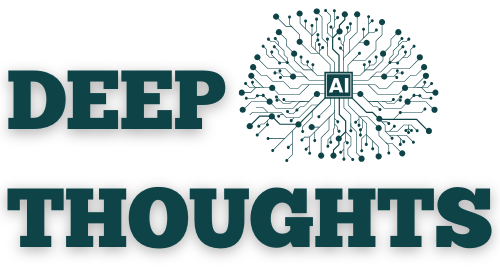Creating AI-Powered Products and Services
Artificial Intelligence (AI) is no longer just a tool for optimizing operations—it’s the foundation of groundbreaking products and services that are reshaping industries. From smart home devices to personalized healthcare solutions, AI-powered innovations are creating new markets and transforming customer expectations. In this article, we’ll explore how businesses can create AI-powered products and services, along with real-world examples and actionable strategies to help you get started.
Why Create AI-Powered Products and Services?
AI-powered products and services offer several advantages:
- Enhanced functionality: AI enables features like personalization, automation, and predictive capabilities.
- Competitive edge: Businesses that leverage AI can differentiate themselves in crowded markets.
- New revenue streams: AI opens up opportunities for subscription-based models, data monetization, and more.
- Improved customer experiences: AI-driven solutions are often more intuitive, efficient, and tailored to user needs.
Steps to Create AI-Powered Products and Services
1. Identify a Problem or Opportunity
The best AI-powered solutions address real customer pain points or unmet needs. Start by identifying a problem that AI can solve or an opportunity it can unlock.
- Example: Fitbit identified the need for personalized health tracking and used AI to create smartwatches that monitor fitness and wellness.
- Actionable Tip: Conduct market research and gather customer feedback to identify gaps in the market.
2. Define the AI Capabilities
Determine how AI will enhance your product or service. Common AI capabilities include:
- Personalization: Tailoring experiences to individual users (e.g., Netflix recommendations).
- Automation: Performing tasks without human intervention (e.g., chatbots).
- Predictive analytics: Forecasting outcomes based on data (e.g., weather apps).
- Natural Language Processing (NLP): Enabling voice or text-based interactions (e.g., virtual assistants like Siri).
- Example: Grammarly uses NLP to provide real-time writing suggestions, improving user productivity.
- Actionable Tip: Choose AI capabilities that align with your product’s purpose and customer needs.
3. Build or Integrate AI Technology
Depending on your resources, you can either build AI models in-house or integrate existing AI tools and platforms.
- Example: Startups like Replika use open-source AI frameworks to build conversational AI chatbots.
- Actionable Tip: Leverage AI platforms like TensorFlow, OpenAI, or IBM Watson to accelerate development.
4. Test and Iterate
AI-powered products require rigorous testing to ensure accuracy, reliability, and user satisfaction. Gather feedback and refine your solution based on real-world usage.
- Example: Tesla continuously updates its self-driving software based on user data and feedback.
- Actionable Tip: Launch a beta version of your product to a small group of users and iterate based on their input.
5. Scale and Monetize
Once your AI-powered product or service is proven, focus on scaling and monetization strategies. Consider subscription models, licensing, or partnerships to generate revenue.
- Example: Zoom uses AI to enhance video conferencing features and monetizes through subscription plans.
- Actionable Tip: Explore pricing models that align with your target audience and market demand.
Examples of AI-Powered Products and Services
1. Healthcare
- AI-Powered Diagnostics: Tools like IBM Watson Health analyze medical data to assist doctors in diagnosing diseases.
- Wearable Devices: Devices like Apple Watch use AI to monitor heart rate, detect irregularities, and provide health insights.
2. Retail
- Virtual Try-Ons: Companies like Warby Parker use AI to let customers try on glasses virtually.
- Personalized Shopping: Amazon’s recommendation engine suggests products based on user behavior.
3. Finance
- Robo-Advisors: Platforms like Betterment use AI to provide personalized investment advice.
- Fraud Detection: AI tools analyze transaction data to detect and prevent fraudulent activities.
4. Education
- Adaptive Learning Platforms: Tools like Khan Academy use AI to personalize learning experiences for students.
- AI Tutors: Virtual tutors provide real-time feedback and support to learners.
5. Entertainment
- Content Creation: AI tools like ChatGPT and DALL·E generate text, images, and music.
- Gaming: AI enhances gameplay by creating dynamic, adaptive environments and characters.
How to Get Started
- Start Small: Focus on a specific problem or feature that AI can address.
- Collaborate with Experts: Partner with AI developers, data scientists, or consultants to accelerate development.
- Leverage Existing Tools: Use pre-built AI APIs and platforms to save time and resources.
- Focus on User Experience: Ensure your AI-powered product is intuitive and adds value to the user.
- Stay Ethical: Address concerns like data privacy, bias, and transparency to build trust with users.
Challenges to Consider
- Data Requirements: AI models require large amounts of high-quality data to perform effectively.
- Technical Complexity: Developing AI-powered solutions can be resource-intensive and require specialized skills.
- Ethical Concerns: Ensure your AI product is fair, transparent, and respects user privacy.
Conclusion
Creating AI-powered products and services is a powerful way to innovate, differentiate, and drive growth. By identifying customer needs, leveraging AI capabilities, and focusing on user experience, businesses can unlock new opportunities and stay ahead of the competition. The future belongs to those who embrace AI as a tool for innovation—are you ready to lead the way?







